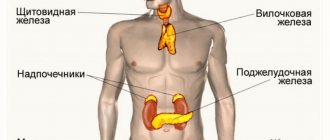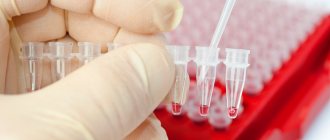Mammology is a field of medicine devoted to the diagnosis, treatment and prevention of diseases of the mammary glands. One of the central problems of the discipline is breast cancer. This disease was known back in Ancient Egypt: in papyri that are more than 3,500 years old, the symptoms are quite accurately described. The Egyptians spoke of bulging tumors for which there is no cure.
Fortunately, modern medicine has come a long way, and even breast cancer is not a death sentence. However, timely identification of the problem is important. If a woman under 50 years of age is regularly diagnosed, the risk of death from breast cancer is reduced by 15%. For women over 50, the figure is even higher—23%. According to statistics, about 70,000 cases of breast cancer are registered in Russia every year, and the disease is rapidly becoming younger, and therefore diagnosis cannot be delayed. A timely visit to a mammologist can save a life.
What is the difference between a mammologist, an oncologist and a gynecologist?
A mammologist is a doctor who deals with the prevention, diagnosis and treatment of diseases of the mammary glands; the doctor also monitors the recurrence of breast diseases and deals with rehabilitation. In Russia there is no such specialty at the official level. As a rule, mammologists have a basic specialty in gynecology, oncology or surgery.
Among mammologists, even narrower specialization is acceptable. For example, a breast radiologist is a professional in recognizing breast pathologies that can be detected using x-rays. A breast surgeon specializes in treatment through surgery. A gynecologist-mammologist deals with dyshormonal diseases of the mammary glands.
What diagnostic methods does an oncomammamologist use?
First of all, the mammologist-oncologist will prescribe an ultrasound or mammography. These studies help to identify pathological neoplasms and suspect their tumor nature. To clarify the diagnosis, doctors resort to a biopsy. In various ways (most often using a special needle), a fragment of tissue is obtained from a suspicious formation and sent to the laboratory. After histological and cytological examination, the diagnosis can be established with almost one hundred percent accuracy.
Studies such as CT, MRI, ultrasound of the abdomen, chest x-ray, and PET scan help to assess the spread of cancer in the body.
Signs that you need to urgently make an appointment with a mammologist
Along with regular visits to the doctor for the purpose of prevention, it is necessary to pay attention to any ailments. There are signs that indicate that you need to contact a mammologist as soon as possible. Namely:
- When palpating the breast, lumps and lumps are felt;
- pain and excessive sensitivity of the breast;
- feeling of swelling - the chest feels too heavy;
- redness, peeling of the skin of the breast, the presence of “orange peel”;
- discharge from the nipples (serous, purulent, bloody);
- cracked nipples;
- diaper rash and ulcers under the breasts;
- enlargement of local lymph nodes;
- change in the appearance of the nipples - wrinkling, retraction, etc.;
- itching in the nipple area;
- asymmetry of the mammary glands;
- chest injuries;
- areolas change size and color;
- the appearance of rashes on the nipples.
Any alarming changes that could be potential symptoms of breast disease should be reviewed by an experienced physician. Remember that some diseases may not make themselves felt for a long time. In the early stages, breast cancer can only be detected with specialized examination.
Mammalogy
Mammology is a branch of medicine dealing with the diagnosis, prevention and treatment of diseases of the mammary glands. Contrary to popular belief, a mammologist deals not only with breast cancer. More often, just the opposite, a mammologist treats non-oncological diseases, such as fibroma, mastopathy, breast cyst, lactostasis, etc.
Prevention of breast diseases
In order to see a mammologist, it is better not to wait for alarming symptoms, but to appear for preventive purposes even before the thunder strikes. It is better to have your first mammogram (x-ray of the mammary glands with a reduced level of radiation) no later than 35 years old , even if you do not have any health problems. Until the age of 35, it is recommended to undergo regular (at least once a year) examinations and ultrasound examination of the mammary glands. After the first mammogram, it is recommended to see a doctor approximately once every 2 years.
In addition, you should see a mammologist during pregnancy or if you decide to undergo surgery to correct the mammary glands (in the latter case, the plastic surgeon is obliged to send you for examination to a mammologist so that he can confirm that there are no contraindications for plastic surgery). It also wouldn’t hurt to see a mammologist if you are prescribed hormonal medications .
Increased risk factors for breast diseases
Medicine currently does not have a clear answer to the question of what should be done in order to avoid the occurrence of breast diseases, including oncology. However, there is reason to believe that certain factors can put a woman at risk and increase her likelihood of developing cancer. Namely:
- Early onset of menstruation (before age 11) and late menopause (after age 55)
- Unmotivated from a medical point of view, refusal to breastfeed
- Early abortions
- Abortion Abuse
- Taking hormonal medications without a doctor's prescription
- Heredity (cases of breast diseases have been observed in the family)
- Increased doses of ultraviolet radiation, topless tanning (without the top of a swimsuit)
- Poor nutrition: it is better to limit the consumption of animal fats and introduce more fruits and vegetables into the diet
Alarming symptoms that require you to consult a mammologist
- Discharge from the mammary glands: either bloody or dark, or clear discharge
- Inverted nipple
- Changes in the skin on the chest: it is either too tight or, conversely, wrinkled
- Redness of the skin of the chest: in patches or entirely
- Any lumps in the breast: lumps, nodules, etc.
Therefore, if you discover any of these alarming symptoms during a self-examination, be sure to see a doctor. You should not resort to recommendations from the Internet, or the advice of “knowledgeable” friends. Even a simple lump can have a completely different character: it can be either a simple mastopathy, which will go away on its own after childbirth, or a fibroma, a benign tumor that does not pose a threat to health and life and is treatable. Even a malignant tumor is not a death sentence, since breast cancer, even at the second stage, can be completely cured. Therefore, the sooner you see a doctor, the greater the chance of complete healing you will give yourself.
Mammology, list of services and cost:
| Taking histology (15.32.) | 4 000,00 |
| Anesthesia (lidocaine) for mammological examination | 1000,00 |
| Biopsy of mammary gland formations (excluding anesthesia) | 5 000,00 |
| Taking smears of discharge from the nipple of the mammary gland (excluding the cost of cytology) | 1000,00 |
| Excision of breast fistulas 1 unit | 40 000,00 |
| Excision of breast fistulas 2 units | 46 000,00 |
| Quadranectomy | 60 000,00 |
| Consultation of men regarding various types of gynecomastia, etc. | 2 500,00 |
| Consultative appointment based on examination results | 2 000,00 |
| Consultation and examination before aesthetic surgery | 2 000,00 |
| Consultation before surgical treatment, deputy. hormotherapy to get a second opinion | 2 500,00 |
| Ultrasound of the 1st breast | 2 000,00 |
| Open extended biopsy of tumors of the mammary glands and their soft tissues | 23 000,00 |
| Initial appointment | 3 500,00 |
| Repeated appointment | 3 000,00 |
| Subcutaneous mastectomy of a woman | 85 200,00 |
| Male subcutaneous mastectomy | 71 000,00 |
| Postoperative dressing for mammological operations | 2 000,00 |
| Preoperative tumor marking under ultrasound control | 2 500,00 |
| Conducting hormonal screening and selection of therapy for dishormonal mastopathy | 2 500,00 |
| Needle biopsy of the breast (2 formations) | 5 500,00 |
| Extended sectoral resection of the breast 2 quadrants | 48 500,00 |
| Sanitation puncture of the mammary gland without taking material (aspiration of contents) | 12 000,00 |
| Sectoral resection of the breast with preoperative marking under ultrasound (1 sample) | 37 000,00 |
| Sectoral resection of the mammary gland (2 formations), category 3 | 45 000,00 |
| Sectoral resection of the breast, category 1 (1 subcutaneous formation) | 17 000,00 |
| Sectoral resection of the breast with soft tissue plastic surgery | 63 800,00 |
| Total biopsy of lymph nodes in the axillary region (without the cost of anesthesia) | 3 500,00 |
| Trephine biopsy of breast tumors (without the cost of anesthesia and ultrasound guidance) | 4 500,00 |
| Removal of the accessory lobe of the mammary gland | 44 000,00 |
| Removal of skin lesions of the mammary gland under local anesthesia (more than 5 units) | 9 00,00 |
| Removal of skin lesions of the mammary gland under local anesthesia 1 unit. | 2 500,00 |
| Removal of skin lesions of the mammary gland under local anesthesia 2-5 units. | 4 500,00 |
| Removal of papilloma in the nipple area | 28 000,00 |
| Ultrasound of lymph nodes | 2 000,00 |
| Ultrasound of the mammary glands | 3 500,00 |
| Ultrasound guidance for breast biopsy | 1 500,00 |
| Ultrasound of the thyroid gland | 2 500,00 |
| Central sectoral resection of the mammary gland | 51 500,00 |
| Analysis of mammary gland punctates 14.15 | 700,00 |
| Analysis 15.32.1 Taking histology (post-operative) | 4 000,00 |
| Anesthesia (lidocaine) for mammological operations. | 2 500,00 |
| Description of mammograms | 1 500,00 |
| Removing stitches | 1 500,00 |
In our clinic EUROLASER, appointments are conducted by mammologist Gennady Evgenievich Zolichev. You can make an appointment with him by phone or by leaving a request on our website - we will contact you to clarify the details and appointment time.
Risk group: who should consult a mammologist
The World Health Organization recommends performing breast self-examination at least once a month, preferably 5-8 days after the start of menstruation. Detailed instructions for self-examination are freely available on the Internet. Please note that palpation should always include both breasts and lymph nodes on both sides of the body. Particular attention should be paid to the upper part of the breast, since according to statistics, up to 50% of breast tumors are concentrated in this area. If you notice any warning signs, you should definitely consult a doctor. Not every symptom is dangerous, but absolutely every symptom requires consultation with a professional.
The development of breast diseases is influenced by genetics, individual characteristics of the functioning of the reproductive system, and lifestyle. At risk are women who are characterized by:
- early age of first menstruation;
- late age of menopause;
- late age of first pregnancy;
- refusal of breastfeeding;
- exposure to ionizing radiation at a young age;
- long-term use of birth control pills;
- obesity;
- diabetes;
- alcohol abuse;
- sedentary lifestyle;
- thyroid diseases;
- irregular sex life.
Women with a close family history of breast cancer (mother, sister were ill) should be subject to special monitoring due to the possibility of a hereditary risk of developing the disease. All women over the age of 20 need to visit a mammologist once every 3 years, from 45 to 50 years old - every 2 years, from 50 years old - once a year.
Myths of mammology
Breast cancer is known to be the most common cancer among women in the world, and the second most common cancer in men and women overall, after lung cancer. Therefore, it is about the factors that cause tumors that there are most rumors.
For example, on the Internet you can find a lot of information about the connection between breast cancer and tight underwear + rubbing “underwires” in bras, but they cannot cause cancer. This is all fiction. People with hormonal imbalances are at risk of developing breast cancer. Reproductive factors are important - early onset of menstruation and late menopause, abortion and late birth of the first child. Constant stress, physical inactivity and poor nutrition can also provoke cancer.
What to look for when choosing a mammologist
There are several signs that indicate the incompetence of a doctor. Pay attention to the specifics of your appointment with a mammologist. Namely:
- Is the doctor ready to give an opinion without diagnostics? A good mammologist, as a rule, first talks with the patient, then conducts an examination and refers him for examination. If the doctor simply examined your breasts and made a diagnosis, this is a reason to be wary. Without the results of ultrasound, mammography and other diagnostic procedures, the doctor cannot make an accurate conclusion.
- Most often, at the appointment it turns out that the patient has mastopathy, and this is a fairly common disease that can be treated. The mammologist will not escalate the situation and make you feel doomed and afraid; he will simply competently tell you about what is happening to the mammary glands, what prospects and treatment options are available.
Our Clinic team consists of exceptionally competent and sensitive specialists. Mammologist doctors will listen to all your complaints, collect anamnesis, conduct a competent examination and refer you for diagnostic examinations. At the same time, most diagnostic procedures are available at the Clinic, and you do not have to waste time traveling to other medical institutions. Based on the results of the tests and examination, the doctor will write an individual treatment plan and give all the necessary recommendations.
How is the first appointment and diagnosis carried out?
A visit to a mammologist does not require prior preparation. It is enough to pay attention to the issue of hygiene and take a medical card with you. It is advisable to wear comfortable clothes so that you can quickly undress and dress. In addition, it is worth preparing a list of questions for the doctor - this way, within one consultation, you will get the opinion of a specialist and be able to get rid of many anxieties associated with women’s health.
The doctor will ask questions about the type and nature of ailments (if any), clarify information regarding the reproductive sphere (taking oral contraceptives, sex life, pregnancy, breastfeeding, etc.). The next stage of the reception is inspection, for this you need to be naked to the waist. The doctor will feel all parts of the mammary gland and the armpit area to identify the presence of lumps and determine changes in the tissues. The doctor will also take into account the absence or presence of pain and will pay attention to discharge from the nipples.
Diagnostics
To make a diagnosis, the mammologist prescribes:
- A general blood test, which, based on an increase in ESR and the number of leukocytes, allows one to suspect a hidden oncological process.
- A biochemical blood test that allows you to determine the level of blood proteins, bilirubin and the activity of liver enzymes (breast cancer metastasizes to the liver, and the liver itself is involved in regulating hormonal balance).
- Blood test for hormones (almost all hormones directly or indirectly affect the mammary gland).
- Genetic analysis to detect mutations in the BRCA1 and BRCA2 genes (which cause breast cancer).
- Serological blood test to detect the presence of antibodies to specific mastitis pathogens.
If necessary, bacteriological analysis is also carried out (culture of material obtained during puncture).
If cancer is suspected, a blood test for tumor markers is prescribed.
The mammologist also prescribes:
- mammography;
- Ultrasound of the breast;
- ductography - x-ray examination of the ducts of the mammary gland with the introduction of a contrast agent through the nipple;
- tomosynthesis - an x-ray examination in which the mammary gland is irradiated in an arc;
- diagnostic puncture;
- cytological examination of discharge from the nipple or fluid obtained during puncture;
- biopsy followed by histological examination;
- MRI;
- mammoscintigraphy - diagnostics with the introduction of radioisotopes that accumulate in cancer cells and enhance their glow on the screen.
Treatment methods and follow-up features
Depending on the type of disease, conservative or surgical treatment may be prescribed. The most commonly used medications are antibacterial drugs, and hormone therapy is also prescribed.
For mastitis and cancer, surgical treatment is indicated. In the case of breast cancer, chemotherapy and radiation therapy can be used. Moreover, if the disease is detected at an early stage, doctors not only do without removing the organ, but also remove the tumor so that no cosmetic defects remain. In this case, an integrated approach is important. Many recent observations show that patients with the same degree of disease progression after conservative treatment have a better prognosis (more chance of recovery) than patients after a mastectomy (surgery to remove the breast). The undeniable advantage of gentle treatment is maintaining a high quality of life and better cosmetic effect after surgery.
Along with therapy, the doctor will give recommendations regarding lifestyle. For example, if you are diagnosed with mastopathy, it is necessary to follow a diet, refuse to visit the bathhouse and sauna, move more, and in the case of pregnancy, it is extremely undesirable to have an abortion - this negatively affects hormonal levels.
To prevent breast diseases, it is important to lead a healthy lifestyle. It is necessary to sleep at least 8 hours a day, spend time in the fresh air, and eat right. Minimizing stress, choosing the right bra and moderate physical activity will also be excellent helpers in preventing breast diseases.
What diseases does a mammologist treat?
The doctor's area of expertise covers a wide range of diseases of the mammary glands. Among them:
- breast adenoma;
- mammary cancer;
- breast cyst;
- breast dysplasia;
- fibrolipoma of the mammary gland;
- breast fibrosis;
- breast hyperplasia;
- breast lipoma;
- breast sarcoma;
- breast tuberculosis;
- lactostasis;
- mastopathy;
- galactorrhea;
- gynecomastia;
- cystoadenopapilloma;
- oleogranuloma of the mammary gland;
- mastalgia;
- mastitis, etc.
The prognosis directly depends on how quickly the diagnosis was made and treatment started.
How to prevent breast problems
There are several principles that any woman should follow to minimize her chance of developing breast cancer:
- The maximum possible reduction in the impact of stress on the body, since scientists have proven that stress leads to the destruction of the body from the inside, including due to the fact that it is a powerful predisposing factor to the development of malignant neoplasms;
- Regular hygiene procedures for the mammary glands. When washing with a sponge, it is recommended to wash your breasts only with smooth circular movements, holding them with your free hand. The use of hard brushes or sponges is not allowed. Besides. It is not recommended to make sudden movements or overstretch the skin on the chest when washing;
- Sun protection. Ultraviolet radiation is one of the factors that can lead to cancer of any location, including tumors in the mammary glands. This means that the breasts must be carefully protected from exposure to sunlight.








